Both the greatest opportunities and the greatest challenges that the William Kent exhibition presents are in recreating within a museum setting a sense of Kent’s designs for grand and influential spaces. Unlike many of his predecessors, Kent did not just devise buildings, or only paint ceilings, or exclusively design furniture, or solely landscape gardens; instead, he did all of this and much more, and it was this range of skills and the ability to incorporate them into a grand scheme that made him the first interior (and exterior) designer. The exhibition will contain some amazing objects from many of the opulent spaces that Kent designed, but there are obviously limits as to how much of a house can go out on loan: unfortunately there is no Kentian equivalent of the entire room that was once in Pompeii and is currently reconstructed at the British Museum. Therefore it’s especially important to give visitors an authentic sense of how Kent’s objects functioned within their original settings.
This can be done from a curatorial perspective by including contemporary views of the houses themselves, like this:
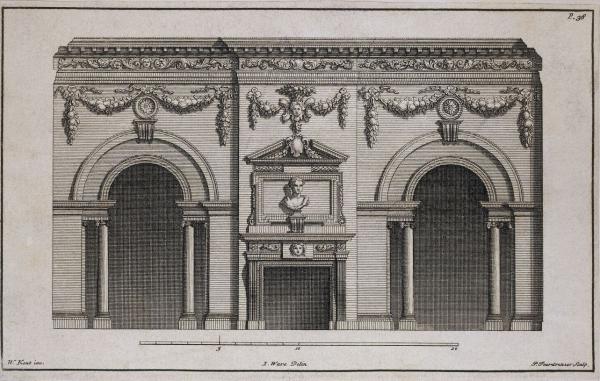
Engraving of the Great Dining Room at Houghton Hall, designed by William Kent, drawn and published in London by Isaac Ware, 1743, etched by Paul Fourdrinier. Museum Number 20603:5 © Victoria and Albert Museum, London
However it still takes a leap of the imagination to go from a black-and-white print to a room as grand as this:
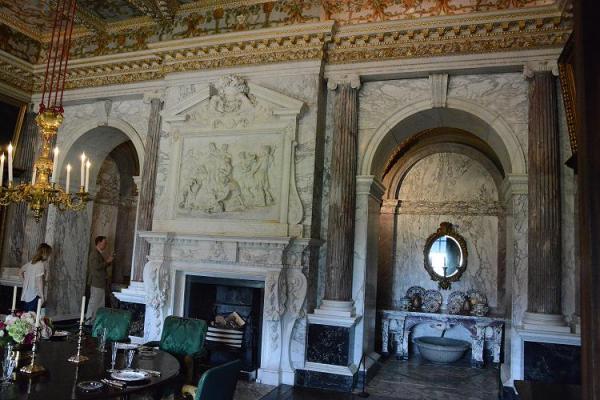
Spot the difference! The Marble Parlour (Dining Room) at Houghton Hall, designed by Kent in 1728. Behind the chimneypiece (and evidently particularly intriguing to the curatorial team) is a door that enabled servants to bring food to the diners. © Robin Clark
Another method of providing atmospheric context is to carefully choose colours and background graphics that help recreate the experience of being inside the spaces themselves. So, armed only with a packed lunch and a colour-matching chart, we set off for Houghton Hall on a little reconnaissance trip. Houghton Hall, in Norfolk, was built by the first Prime Minister, Robert Walpole, who commissioned Kent to design the lavish interiors. This remarkable state bed is unfortunately not able to come to the exhibition, but is part of Walpole’s Green Velvet suite of rooms (like the chair I wrote about last time).
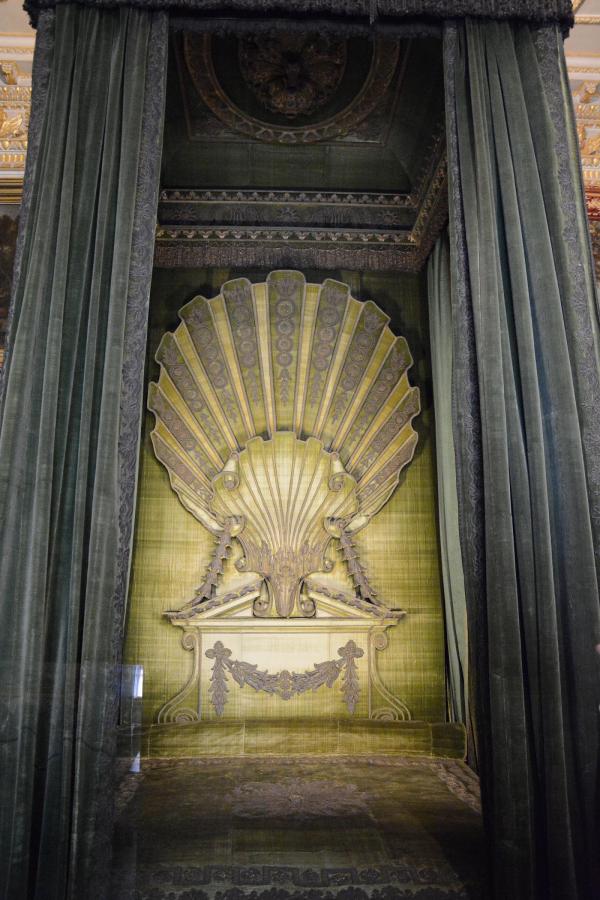
State bed in Houghton Hall designed by William Kent for Sir Robert Walpole, with hangings of green silk velvet and silver thread embroidery, ca.1732. Museum number W.58-2002. © Robin Clark
As you can see, the velvet has faded over time, and it’s hard to see which colour is original and what is the result of 300 years of light exposure. It’s even harder to match it to a paint colour to use in the exhibition design:
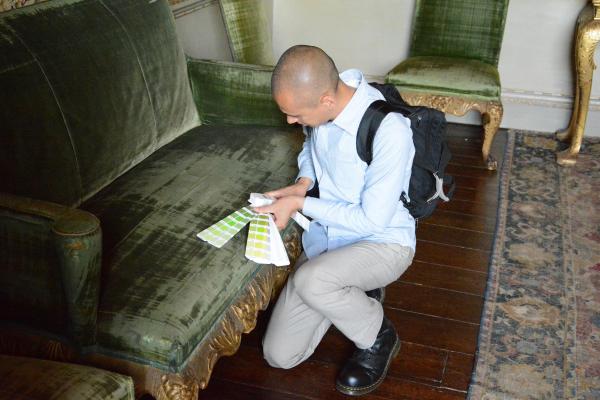
No Fifty Shades jokes, please. © Robin Clark
These colour matches are then fed back into the scheme design to give the visitor to the V&A the most authentic sense of how it actually feels to see Kent’s work in its native environment.
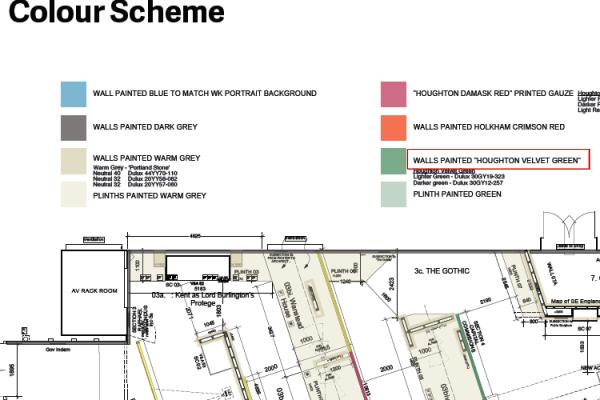
A snapshot of the Designers’ colour scheme. © HaraClark Ltd., London